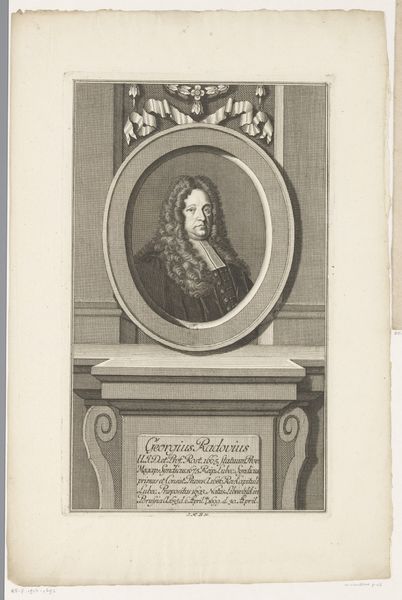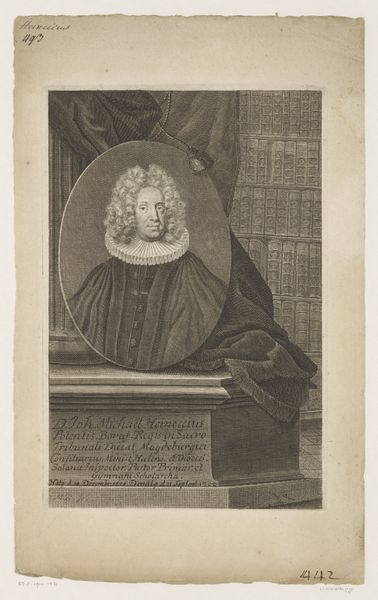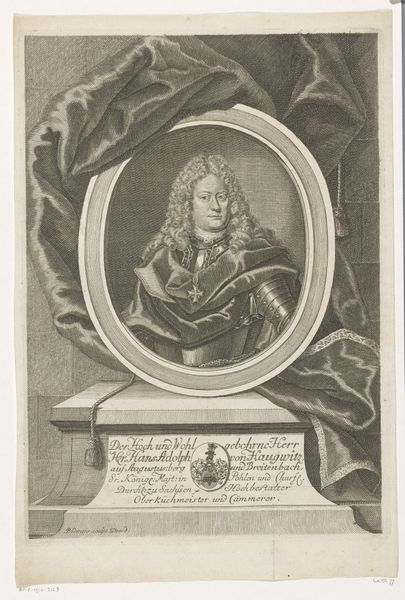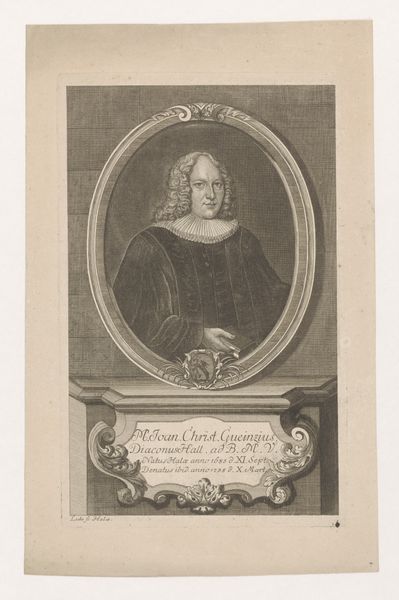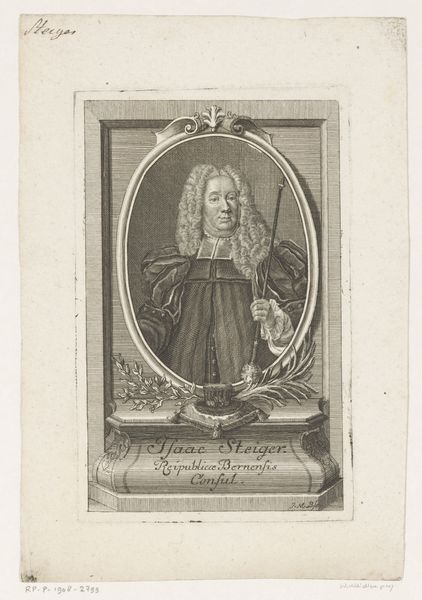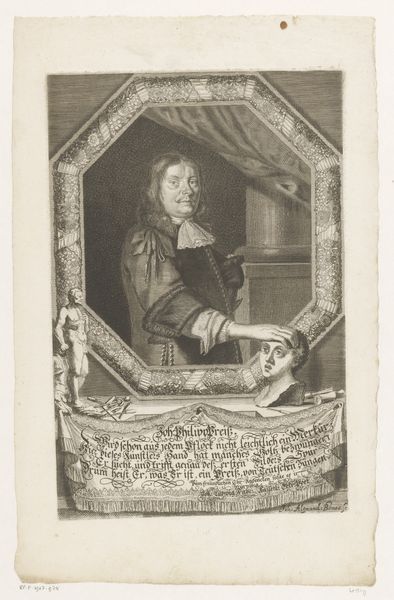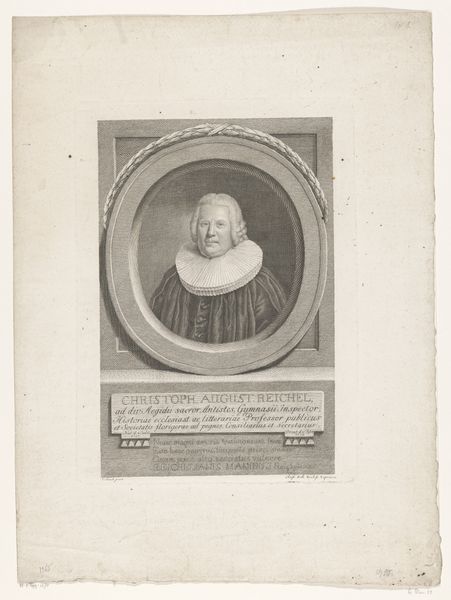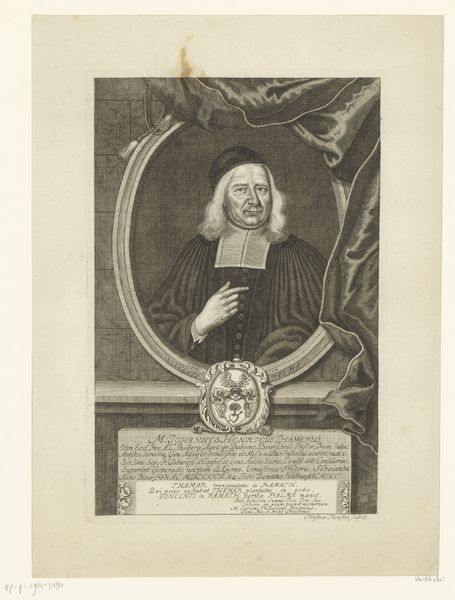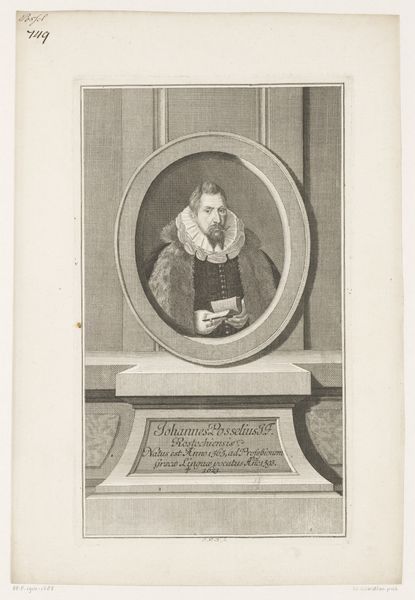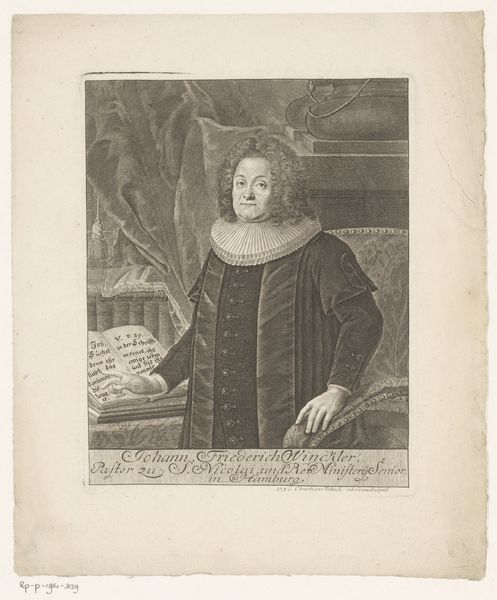
print, engraving
#
portrait
#
baroque
# print
#
old engraving style
#
form
#
engraving
Dimensions: height 288 mm, width 177 mm
Copyright: Rijks Museum: Open Domain
Editor: Here we have Johann Martin Bernigeroth's "Portret van Franz Wolff" from 1743, an engraving now housed in the Rijksmuseum. It’s so formal, almost austere, yet the sitter’s hand gesture adds a touch of dynamism. How do you interpret this work? Curator: This piece invites us to consider how identity was constructed and disseminated in the 18th century through portraiture. We see Wolff presented as a figure of learned authority. Note how the trappings of status—the formal attire, the carefully posed hand—are meticulously rendered in the print. This was intended not just to represent Wolff but to project a certain image of power and social standing, but for whom and what purpose? Editor: I see what you mean about projecting power. The elaborate presentation definitely conveys authority. I’m curious, how does the medium of printmaking play into this projection? Curator: The print, unlike a unique painting, allowed for wider distribution. Consider this in the context of the Enlightenment and the rise of a bourgeois public sphere. Printmaking enabled the circulation of ideas and images to a broader audience. What is being circulated is not simply a portrait, but also a certain social ideal and what is omitted from such ideals. Editor: So, it's not just about seeing Wolff as an individual, but about understanding what he represents within his social context. Were there any power dynamics in play within these idealized portraits? Curator: Precisely! These images served to reinforce existing social hierarchies. Now, let’s also think about who *didn't* get their portraits circulated like this. Consider the absence of women, people of color, or working-class individuals. What does that silence tell us about who was considered worthy of representation, worthy of being remembered and idealized? Editor: That really changes how I see it. I initially saw a straightforward portrait, but now I see it as a statement about social power and representation, as well as the complexities that stem from who is unseen. Curator: Exactly. By critically examining the work, we uncover not just the face of a man from the past but also a glimpse into the societal values and the systems of power that shaped his world and continue to influence ours.
Comments
No comments
Be the first to comment and join the conversation on the ultimate creative platform.
